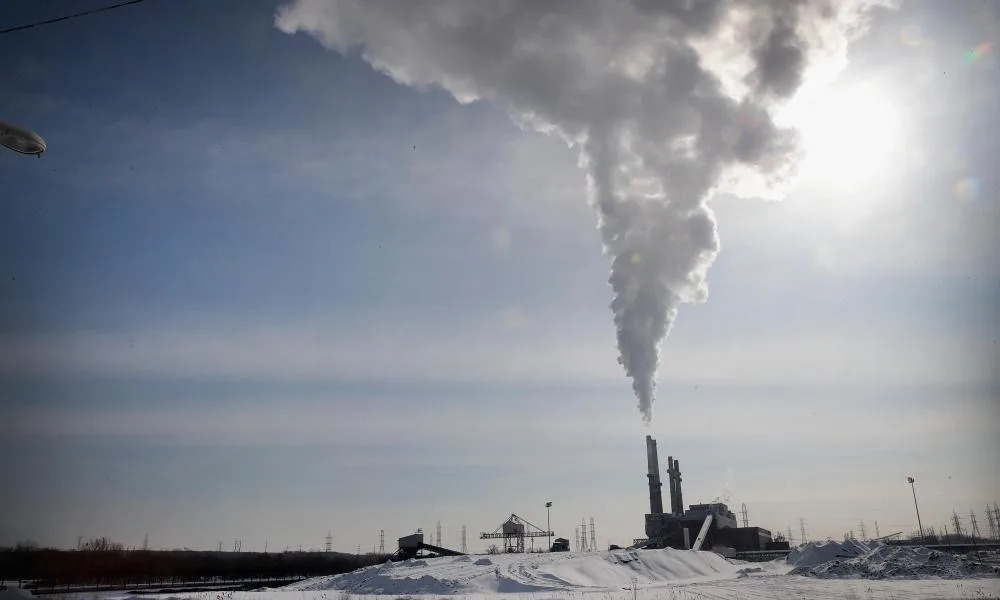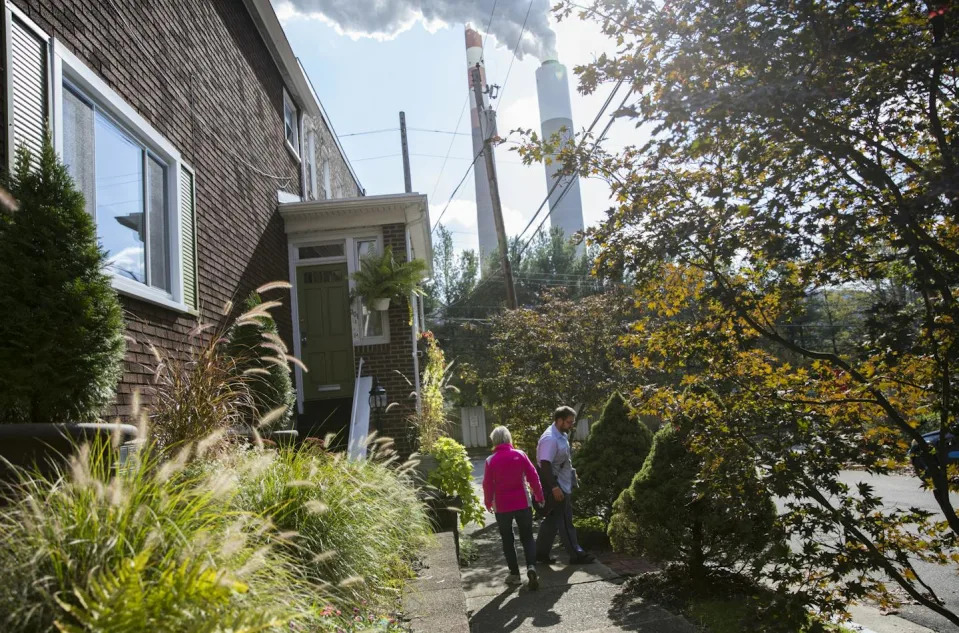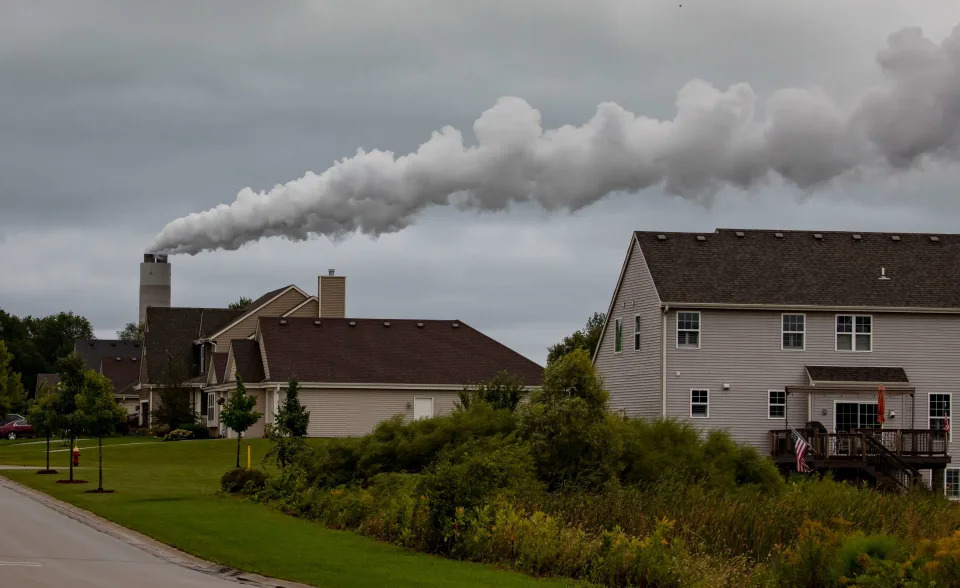Key points:
- In an examination of emissions data and Medicare records, researchers calculated that exposure to fine particulate air pollutants emitted by coal-fired power plants (coal PM2.5) is associated with a mortality risk 2.1 times greater than that of PM2.5 from other sources.
- Between 1999 and 2020, 460,000 deaths among Medicare enrollees were attributable to coal-fired power plants; 10 of these plants each contributed at least 5,000 deaths.
- The vast majority of deaths took place between 1999 and 2007, and by 2020 deaths from coal-fired power plants decreased substantially—pointing to the efficacy of regulations on coal PM2.5, researchers say.
Exposure to fine particulate air pollutants from coal-fired power plants (coal PM2.5) is associated with a risk of mortality more than double that of exposure to PM2.5 from other sources, according to a new study led by George Mason University, The University of Texas at Austin, and Harvard T.H. Chan School of Public Health. Examining Medicare and emissions data in the U.S. from 1999 to 2020, the researchers also found that 460,000 deaths were attributable to coal PM2.5 during the study period—most of them occurring between 1999 and 2007, when coal PM2.5 levels were highest.
The study will be published on November 23, 2023, in Science.
While previous studies have quantified the mortality burden from coal-fired power plants, much of this research has assumed that coal PM2.5 has the same toxicity as PM2.5 from other sources.
“PM2.5 from coal has been treated as if it’s just another air pollutant. But it’s much more harmful than we thought, and its mortality burden has been seriously underestimated,” said lead author Lucas Henneman, assistant professor in the Sid and Reva Dewberry Department of Civil, Environmental, and Infrastructure Engineering at Mason. “These findings can help policymakers and regulators identify cost-effective solutions for cleaning up the country’s air, for example, by requiring emissions controls or encouraging utilities to use other energy sources, like renewables.”
Using emissions data from 480 coal power plants in the U.S. between 1999 and 2020, the researchers modeled where wind carried coal sulfur dioxide throughout the week after it was emitted and how atmospheric processes converted the sulfur dioxide into PM2.5. This model produced annual coal PM2.5 exposure fields for each power plant. They then examined individual-level Medicare records from 1999 to 2016, representing the health statuses of Americans ages 65 and older and representing a total of more than 650 million person-years. By linking the exposure fields to the Medicare records, inclusive of where enrollees lived and when they died, the researchers were able to understand individuals’ exposure to coal PM2.5 and calculate the impact it had on their health.
They found that across the U.S. in 1999, the average level of coal PM2.5 was 2.34 micrograms per cubic meter of air (μg/m3). This level decreased significantly by 2020, to 0.07 μg/m3. The researchers calculated that a one μg/m3 increase in annual average coal PM2.5 was associated with a 1.12% increase in all-cause mortality, a risk 2.1 times greater than that of PM2.5 from any other source. They also found that 460,000 deaths were attributable to coal PM2.5, representing 25% of all PM2.5-related deaths among Medicare enrollees before 2009.
The researchers were also able to quantify deaths attributable to specific power plants, producing a ranking of the coal-fired power plants studied based on their contribution to coal PM2.5’s mortality burden. They found that 10 of these plants each contributed at least 5,000 deaths during the study period. They visualized the deaths from each power plant in a publicly available online tool (https://cpieatgt.github.io/cpie/).
The study also found that 390,000 of the 460,000 deaths attributable to coal-fired power plants took place between 1999 and 2007, averaging more than 43,000 deaths per year. After 2007, these deaths declined drastically, to an annual total of 1,600 by 2020.
“Beyond showing just how harmful coal pollution has been, we also show good news: Deaths from coal were highest in 1999 but by 2020 decreased by about 95%, as coal plants have installed scrubbers or shut down,” Henneman said.
“I see this as a success story,” added senior author Corwin Zigler, associate professor in the Department of Statistics and Data Sciences at UT Austin and founding member of the UT Center for Health & Environment: Education & Research. “Coal power plants were this major burden that U.S. policies have already significantly reduced. But we haven’t completely eliminated the burden—so this study provides us a better understanding of how health will continue to improve and lives will be saved if we move further toward a clean energy future.”
The researchers pointed out the study’s continuing urgency and relevance, writing in the paper that coal power is still part of some U.S. states’ energy portfolios and that global coal use for electricity generation is even projected to increase.
“As countries debate their energy sources—and as coal maintains a powerful, almost mythical status in American energy lore—our findings are highly valuable to policymakers and regulators as they weigh the need for cheap energy with the significant environmental and health costs,” said co-author Francesca Dominici, Clarence James Gamble Professor of Biostatistics, Population, and Data Science at Harvard Chan School and director of the Harvard Data Science Initiative.
Funding for the study came from the National Institutes of Health (grants R01ES026217, R01MD012769, R01ES028033, 1R01ES030616, 1R01AG066793, 1R01MD016054-01A1, 1R01ES 034373-01, 1RF1AG080948, and 1R01ES029950); the Environmental Protection Agency (grant 835872); the EmPOWER Air Data Challenge (grant LRFH); the Alfred P. Sloan Foundation (grant G-2020-13946); and the Health Effects Institute (grants R-82811201 and 4953).
“Mortality risk from United States coal electricity generation,” Lucas Henneman, Christine Choirat, Irene Dedoussi, Francesca Dominici, Jessica Roberts, Corwin Zigler, Science, online November 23, 2023, doi: 10.1126/science.adf4915.
###
Harvard T.H. Chan School of Public Health brings together dedicated experts from many disciplines to educate new generations of global health leaders and produce powerful ideas that improve the lives and health of people everywhere. As a community of leading scientists, educators, and students, we work together to take innovative ideas from the laboratory to people’s lives—not only making scientific breakthroughs, but also working to change individual behaviors, public policies, and health care practices. Each year, more than 400 faculty members at Harvard Chan School teach 1,000-plus full-time students from around the world and train thousands more through online and executive education courses. Founded in 1913 as the Harvard-MIT School of Health Officers, the School is recognized as America’s oldest professional training program in public health.
George Mason University is Virginia’s largest public research university. Located near Washington, D.C., Mason enrolled over 40,000 students from 130 countries and all 50 states for the fall 2023 semester. Mason has grown rapidly over the last half-century and is recognized for its innovation and entrepreneurship, remarkable diversity, and commitment to accessibility. Also in 2023, the university launched Mason Now: Power the Possible, a $1 billion comprehensive campaign to support student success, research, innovation, community, and sustainability. Learn more at gmu.edu.
The University of Texas at Austin is a bold, ambitious leader supporting some 52,000 diverse students, 3,000 teaching faculty, and top national programs across 19 colleges and schools. As Texas’ leading research university, UT attracts more than $650 million annually for discovery. Amid the backdrop of Austin, Texas, a city recognized for its creative and entrepreneurial spirit, the university provides a place to explore countless opportunities for tomorrow’s artists, scientists, athletes, doctors, entrepreneurs and engineers.
METHOD OF RESEARCH
Observational study
SUBJECT OF RESEARCH
Not applicable
ARTICLE TITLE
Mortality risk from United States coal electricity generation
ARTICLE PUBLICATION DATE
23-Nov-2023






















